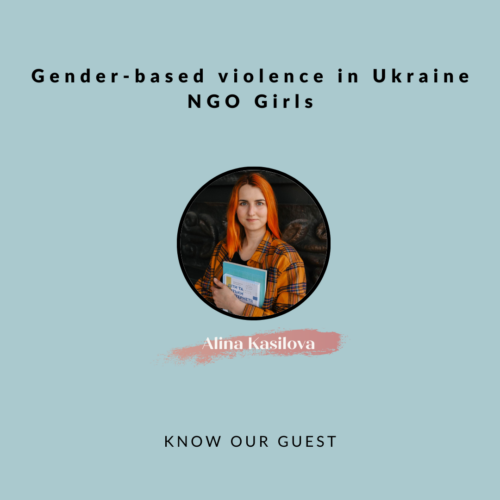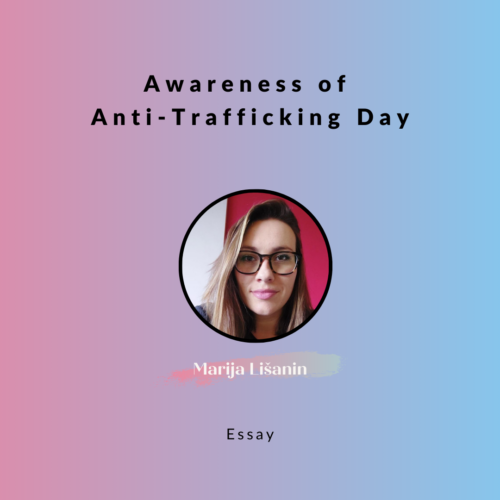
Today, a day marking the occasion of the International Day for the Elimination of Violence Against Women, we can safely say that women are not safe anywhere in the world. We witness on the one spectrum violations of basic human rights and needs in Palestine, Iran, Afghanistan, Yemen, Syria, South Sudan and Ukraine, at times through uncensored disturbing images and video footage (becoming another everyday story to quickly scroll down on) and on the other spectrum online abuse or harassment with sexist, misogynistic comments at times leading to threats against women.
Last year’s blog post (click here) highlighted that violence against women and girls is a worldwide pandemic in Europe and internationally by referencing data and concerns whilst also sharing knowledge on the legal definitions of violence against women.
This year, a tribute will be paid to the history behind the designation of this day as an International Day for the Elimination of Violence against Women whilst also introducing the idea of why examining varieties of patriarchy sustained and reinforced by other systems of domination as well as paying intersectional attention to gender, sexuality and other inequalities/oppressions, is essential prior to forming strategies and policies regarding violence perpetrated against women.
Symbols of democratic and feminist resistance
On 17 December 1999, the General Assembly, at its 83rd plenary meeting of the fifty-fourth session, on the basis of the Report of the Third Committee (A/54/598 and Corr. 1 and 2), adopted Resolution 54/134 on the International Day for the Elimination of Violence against Women. It is important to share with you and honour the history behind this day.
United Nations General Assembly designated the 25th of November as the International Day for the Elimination of Violence against Women in honor of three of the Mirabal sisters; Patria, Minerva and Maria Teresa. Patria, Minerva and Maria Teresa were three sisters who lived in the Dominican Republic whilst their country was under the dictatorship of Rafael Trujillo. Those who stood in his way were imprisoned, tortured and murdered. In the late 1930s, Trujillo ordered a racially motivated mass murder of thousands of Haitians who were living in the Dominican Republic. His reign lasted 31 years, and his power suppressed many citizens and their rights in a totalitarian regime. Trujillo would often employ people to find young girls for him to exploit.
The three Mirabal Sisters actively opposed the violence systematically perpetrated by Rafael Trujillo’s reign and joined the 14th of June Movement, an underground movement to challenge his regime. The Mirabal Sisters all experienced threats from Rafael Trujillo, who would often order people to arrest and harass them. In their campaigning to bring awareness to Trujillo’s actions, the Mirabal sisters produced and distributed leaflets which named the individuals that he had killed. On the 25th of November 1960, Patria, Minerva and Maria Teresa were clubbed to death by individuals sent by Rafael Trujillo. The murder of the three Mirabal sisters sparked a public outrage, which in part led to the assassination of Rafael Trujillo 6 months later by former allies.
The Mirabal sisters became symbols of democratic and feminist resistance. They became known as ‘Las Mariposas’ which translates to ‘The Butterflies’. Their sister, Dede, although not part of their movement, dedicated her time to commemorate her sisters’ memories.
These sisters and their symbol of the butterfly became woven into the Latin American feminist movement as people began to walk in an honorary “march of the butterflies” on the anniversary of their deaths.
From the official “Marcha de las Mariposas” (March of the Butterflies) in Santo Domingo to the streets of Buenos Aires, Mexico City, Puerto Rico, and more, these gatherings have become emblematic of the ongoing fight against gender-based violence around the world and femicides, particularly as in Latin America femicide rates are especially high (in Honduras 4.6 cases for every 100,000 women, in the Dominican Republic 2.7 cases for every 100,000 women, in El Salvador 2.4 cases for every 100,000 women, in Bolivia 1.8 cases for every 100,000 women and Brazil 1.7 cases for every 1000,000 women).
When I recently read more about the history of the Mirabal sisters, I could not but think of the Iranian women leading a movement in Iran with men by their side following the killing of Mahsa Amini, arrested by the Vice Police for wearing a loose hijab, resulting in her hair being “let loose”. Cropped locks of hair and a rose flower became the symbol of support for their right to freedom, self-determination, choice and freedom of speech. The resistance and fortitude shown by Iranian women is nothing new as they have repeatedly performed acts of self-sacrifice against tyranny and dictatorship and anyone determined to force them into silence (Tahirih Qurratul-Ayn, Homa Darabi and Sahar Khodayari are a few of such women).
And just like the Mirabal sisters’ movement, today we still witness worldwide movements such as those in Iran and Afghanistan fighting for women and their right to live, speak, educate and participate in public life.
“A small movement then gains such momentum. It has a butterfly effect. We have to see how a butterfly can cause great storms”, (Minou Mirabal, daughter of María Argentina Minerva Mirabal, 2022).
The Mirabal sisters and so many others proved that women are essential and central to creating society; they are and always have been actors and agents in history.
Violence against women or patriarchal violence?
As author Jackson Katz explains, the term ‘violence against women’ is a passive construction, “there’s no active agent, it’s a bad thing that happens to women… as if nobody’s doing it to them“. By reframing ‘violence against women’ as ‘patriarchal violence’, we shift the focus to force a reckoning of why women are being victimized. While it is critical that we recognize that girls and women are most often subject to violence at the hands of men, it is more important that we recognize that such violence is part of a broader mission to preserve the patriarchal hierarchy.
Emphasizing the ideological motivation of violence over the sex or gender of the typical perpetrator will also facilitate the recruitment of men in the fight against patriarchal violence. Teaching and theorizing violence against women as if it is personal – unrelated to an overarching intentional social mission to keep women subjugated – is unacceptable. Instead, we must continue to concern ourselves with the ideological foundation of the deep violation of our human rights that continue to be waged against our bodies and our autonomy throughout the world.
Feminist scholar and activist Bell Hooks has argued that domestic violence is a “softer” term in that it too often inadvertently ignores power and male dominance inherent in such violence (Hooks 2013). Other feminist activists and researchers have similarly argued that bringing patriarchy back into discussions of violence is key to focusing on the power dimensions that drive it.
Hunnicutt (2009) provides more inclusive and precise (as well as current) definitions of patriarchy. She states that “patriarchy […] means social arrangements that privilege males, where men as a group dominate women as a group, both structurally and ideologically-hierarchical arrangements that manifest in varieties across history and social space” (557). This definition is similar to others that have noted that patriarchy is not static (Beechey 1979).
If we want to understand the indestructible nature of patriarchal dominance, including violence against women, we should all read the work of historian Gerda Lerner. Lerner systematically traces the origins of patriarchy in Western societies through the control of women’s reproductive abilities and their sexuality by men. This control is legitimized through social norms, the law, the State and religion, and therefore appears resistant to change and seemingly eternal.
It is argued that not all men are benefactors of patriarchy and not all women are subordinate victims of patriarchy (see Schwartz 1988). The reality is many men and women face subordination both within and outside their familial or intimate settings, particularly lower-class individuals and racial minorities (Connell and Messerschmidt 2005). Others have argued that violence against women is a manifestation of patriarchal systems and may indeed reinforce those systems, but such violence is rarely used consciously by men to maintain gender hierarchies. In other words, as argued, violence against women is more a consequence of patriarchies than the cause of them (with exceptions in societies where the killing of women is used to reinforce extreme patriarchal policies in place; such as in Algiers where women who refused to wear the veil were killed, and as we recently saw in Iran).
“Patriarchies do not exist in uniform and systematic ways but instead vary across time, place, and material contexts. These varieties are forever shifting as power relations change in concert with other key social changes. Violence against women is a product of patriarchal social arrangements and ideologies that are sustained and reinforced by other systems of domination. Varieties of patriarchy must be understood holistically, then, in terms of interlocking structures of domination. What is needed is theory construction that allows for variation in degrees, types, and dimensions of dominance, power, and resistance.”
Polder and Wells (2004) and Berendt (2010) described that patriarchy is not a fixed (static) phenomenon as it reinvents itself after a period in the space of capitalism and cultural or social settings of the society.
Intersectionality
Intersectionality was originally conceived by Kimberlé Crenshaw in 1989 as a tool for the analysis of the ways in which different forms of social inequality, oppression and discrimination interact and overlap in multidimensional ways. It invites us to go beyond women’s single-axis locations to examine the correlation between younger women’s intersectional social locations (which are socially produced sites of power, oppression, and privileges) to enhance our understanding of their heightened physical intimate partner violence risk.
“Intersectionality is a conceptualization of the problem that attempts to capture both the structural and dynamic consequences of the interaction between two or more axes of subordination. It specifically addresses the manner in which racism, patriarchy, class oppression and other discriminatory systems create background inequalities that structure the relative positions of women, races, ethnicities, classes, and the like. Moreover, it addresses the way that specific acts and policies create burdens that flow along these axes constituting the dynamic or active aspects of disempowerment.” (Crenshaw 2000)
Black feminists and feminists of colour from the global North and South called for engagement with global structures of economic and social inequality—racism, imperialism, and capitalism—arguing that only through attention to these complex, interlocking structures of oppression could a movement to end violence against women truly be transformational.
When reform efforts and intervention strategies towards ending violence against women neglect the fact that black women, disabled women, indigenous, transgender, lesbian, bisexual, and immigrant women (and the intersection between them) face different obstacles when violence is perpetrated against them, their needs will not be met as opposed to women who do not share the same class, race or background.
Intersectional approaches to violence against women recognise that all oppressions exist simultaneously and that categories of oppression mutually construct each other to create distinctive experiences of violence for women and girls. For example, for a disabled Roma woman living in the Western Balkans, her experiences of sexism, ableism, racism and poverty are compounded to produce a particular experience of violence and oppression.
Furthermore, policy and legislation which recognise the need to support survivors of domestic violence without also ensuring provision is available to support survivors of other forms of abuse which disproportionately affect minoritised women, such as forced and early marriage, fails to recognise Article 4.3 of the Istanbul Convention. This Article obliges states to take necessary measures to prevent and combat all forms of violence without discrimination on any ground such as sex, gender, race, colour, language, religion, political or other opinion, national or social origin, association with a national minority, property, birth, sexual orientation, gender identity, age, state of health, disability, marital status, migrant or refugee status, or other status. An intersectional approach is necessary in all areas of work relating to ending violence against women and girls.
The former UN Special Rapporteur Rashida Manjoo stated that “lack of attention to intersectionality not only inhibits policymakers from assessing inequalities between women and men, but also inhibits their ability to assess how differently positioned women experience discrimination and violence”. The Special Rapporteur considered how violence is contingent on women’s material conditions, individual attributes and social locations, and recommended a holistic approach that addresses systematic discrimination and marginalization (Manjoo, 2014).
The Istanbul Convention and its role in collecting data and identifying the root causes of violence
Article 11 of the Istanbul Convention obliges State Parties to:
a) collect disaggregated relevant statistical data at regular intervals on cases of all forms of violence covered by the scope of this Convention;
b) support research in the field of all forms of violence covered by the scope of this Convention in order to study its root causes and effects, incidences and conviction rates, as well as the efficacy of measures taken to implement this Convention.
Conclusion
To conclude the above, state and organizations’ data collection, research and strategies towards tackling and ending violence against women must reflect the examination of patriarchal varieties lying behind the perpetrators’ actions and must also ensure that intersectionality as a tool is used to analyze and understand the intersection of gender with other inequalities/oppressions.
P.S.
For those who think that violence against women doesn’t impact them, the global cost of it has been estimated to be at least 1.5 trillion dollars. A World Bank study found that violence against women costs 1.2 -3.7% of gross domestic product for some countries and emphasized that these proportions of gross domestic product are what many countries spend on primary education. Additionally, according to the European Institute for Gender Equality (EIGE), it costs the EU €289 billion per year. EPRS research quantifies the cost of cyber-violence against women and girls at €49 to €89.3 billion per year. Survivors, of course, bear the biggest cost with psychological trauma and mental distress, to name a few consequences of violence perpetrated against them.
by Alexandra Markidou



